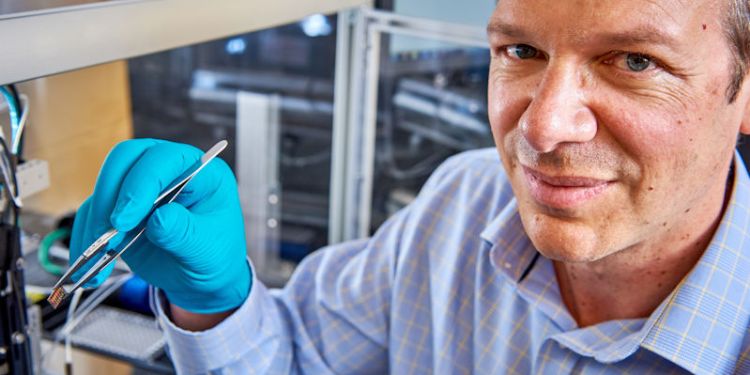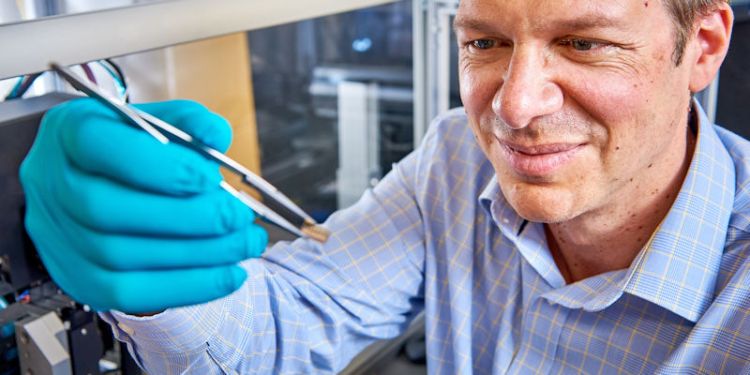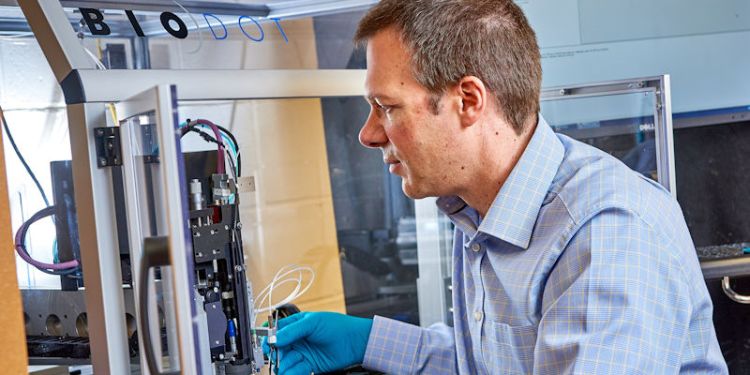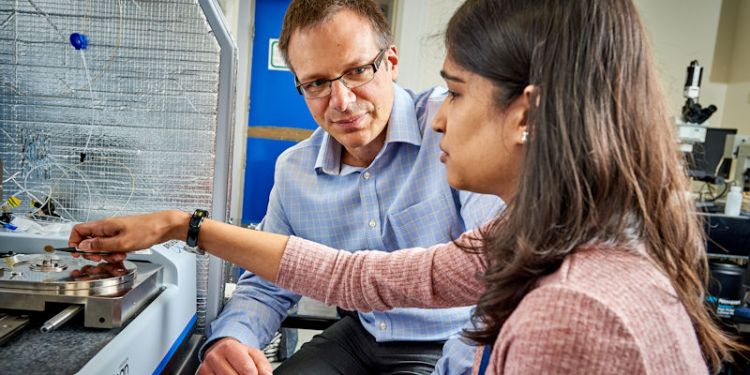Desktop device: new technology will give GPs the tools to diagnose bacterial infection

Antimicrobial resistance is a major challenge: antibiotics are becoming ineffective due to over-exposure to the human body, which can cause bugs to develop a resistance. The World Health Organisation has reported that there could be around 10m deaths globally as a result of antimicrobial resistance.
There is a vast pressure on General Practitioners (GPs) to prescribe antibiotics to patients who report having cold-like symptoms, which are the same in a bacterial or viral infection. Many of these patients are prescribed antibiotics, but will not benefit from the drug because they have a virus.
Currently, no efficient method of being able to tell whether an infection is bacterial or viral has been deployed in a clinical setting. But, Professor Christoph Walti is developing a desktop device which could distinguish between the two in a matter of minutes.
He said: “The technology will equip GPs with the tools and information they need to accurately diagnose the correct type of infection during a short appointment. It could prevent risk of future patients developing resistant bugs.”
The technology... could prevent risk of future patients developing resistant bugs.
Easy to use, portable technology
The current care pathway does not allow enough time to diagnose an infection during a doctor’s appointment. Currently, conducting this kind of test involves a time-consuming blood sampling procedure, which can be tricky to set up and deliver.
Professor Walti said: “This new technology could revolutionise the way the tests are conducted. It will allow GPs to evidence whether the patient needs antibiotics during a short appointment.
“One of the projects aims is to reduce the demand on GPs to provide an instant solution to patients with viruses.”
This new technology could... allow GPs to evidence whether the patient needs antibiotics during a short appointment.
He added:
“With GP-patient appointment times becoming increasingly shorter, having an efficient solution that works is crucial.”
Smart electronics
Professor Walti’s device is a small silicon chip that is only the size of a microscope slide. It contains fluid channels to separate the blood sample into five different compartments. Once the blood is inserted into the chip and extracted into these channels, electronics which are embedded into the device will test the five blood samples individually.
Professor Walti said: “Ultimately, the aim is to be able to extract the blood sample into the device using a finger prick.”

The device is a small silicon chip, the size of a microscope slide, which contains fluid channels to separate the blood into five different compartments
Previous studies which have analysed C-reactive protein (CRP) levels in the blood in order to diagnose bacterial infections were not deployed in medical practices. CRP, a chemical produced by the liver, is a marker of inflammation in the body and can be monitored by testing the blood. However, levels of the chemical can be high in any inflammatory condition, not just an infection.
Professor Walti’s research has found that analysing the five markers is the most effective method of determining whether an infection is bacterial, as the results offer a more in-depth indication of the problem.
Overcoming challenges
Currently, the device is in its pre-clinical trial phase, and is expected to be developed in within five years. Results of the trial will be critical in determining the study’s next steps.
The trial will include approximately 100 patients. It will also require GPs using the device during patient appointments, which means using different methods in line with the current care pathway, such as pre- and post-screening.
Industry benefits
At the moment only single-plex tests – for example, as used in the CRP study – are available to commercial companies, but Professor Walti’s study uses a multi-channel approach. Manufacturing this multiplex device could be a first for companies with a need to supply easy-to-use, affordable technology within the medical sector.
Knowledge exchange
Interdisciplinary collaboration is central to University of Leeds’ research ethos.
Professor Walti said:
“We have an established culture for interdisciplinary research. Uniquely, we have a long tradition of working and integrating with clinicians: We need our clinical colleagues so we can understand how our research can link into the care pathway and offer the most appropriate healthcare benefits.

Electronics are an integral part of any sensor device that Professor Walti and his team are developing
We have an established culture for interdisciplinary research… to understand how our research can... offer the most appropriate healthcare benefits.
“Our researchers are spread over engineering, biology, physics, and medicine, with 12 investigators on the project. Professor Mark Wilcox, Medicine and Health, has expertise in antimicrobial resistance.”
He added:
“Electronics are an integral part of any sensor device that we develop. It’s very important that we understand each area of research, working together solve much more complex problems which span more than one discipline.”
Currently, Professor Walti is working with a team of postgraduate researchers, including Dr Andrew Lee, who use atomic force microscopy as part of their research into cell separation.

Professor Walti is working with a team of postgraduate researchers who use atomic force microscopy as part of their research into cell separation
Contact us
If you would like to discuss this area of research in more detail, please contact Professor Christoph Walti.

